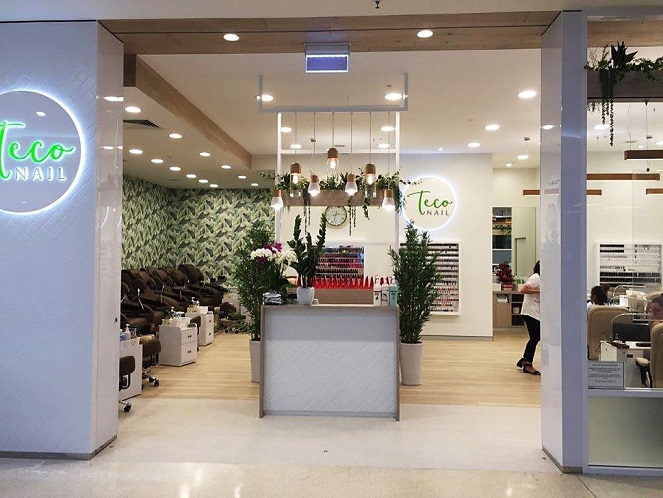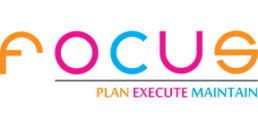Retail fitouts play a crucial role in creating a visually appealing and functional space for businesses. Whether you’re starting a new retail venture or renovating an existing one, a well-executed fitout can enhance the customer experience and boost your business’s success. In this article, we will explore the concept of a retail fitout, discuss the importance of a well-executed fitout, and provide you with valuable tips and insights on how to accomplish a retail fitout successfully.

Understanding Shop Fit Out Concepts
A retail fitout refers to the process of designing and constructing the interior space of a retail store. It involves various elements, such as the layout, fixtures, signage, lighting, and decor, that are carefully planned and executed to create an inviting and functional environment for customers. A successful fitout should align with your brand image, target market, and overall business goals.

Importance of a Well-Executed Retail Fitout
A well-executed retail fitout can have a significant impact on your business’s success. It helps create a positive first impression on customers, making them more likely to enter your store and make a purchase. A thoughtfully designed and curated space can also enhance the overall customer experience, making customers feel comfortable, engaged, and inspired. Furthermore, a well-designed fitout can improve the functionality of your store, optimizing the use of space and ensuring efficient operations.
Investing in a professional retail fitout can also give you a competitive edge. A visually appealing and aesthetically pleasing store can attract more foot traffic and differentiate your brand from competitors. It can also help build brand recognition and loyalty, as customers are more likely to remember and recommend a store with a unique and memorable interior.
Factors to Consider Before Starting a Shopfit
Before embarking on a retail fitout project, there are several factors to consider to ensure its success. First and foremost, you need to have a clear understanding of your brand identity and target market. The fitout should align with your brand’s values, aesthetics, and target customers’ preferences. Conducting market research and competitor analysis can provide valuable insights into current retail trends and customer expectations.
Another factor you should consider before starting is your budget. Establish a realistic budget for your fitout project, taking into account the costs of design, construction, materials, fixtures, and professional services. It’s important to strike a balance between your desired fitout vision and the available resources. Prioritize the essential elements that will have the most significant impact on your business and allocate your budget accordingly.
Shopfit Planning
Proper planning is key to a successful retail fitout project. Start by creating a comprehensive project plan that outlines the desired outcomes, timelines, and milestones. Consider engaging the services of a professional fitout consultant or project manager to assist you in the planning process. They can provide expert advice, help you develop a realistic timeline, and ensure that all necessary permits and approvals are obtained.
During the planning phase, it’s essential to create a detailed layout and floor plan for your store. Consider the flow of customer traffic, the positioning of product displays, and the allocation of space for different functional areas, such as checkout counters, fitting rooms, and storage. A well-designed layout will optimize the customer journey and maximize the use of available space.
Hiring Professionals for Your Retail Fitout
While it may be tempting to undertake a retail fitout project on your own, hiring professionals can save you time, money, and potential headaches. Consider engaging an experienced retail fitout company or interior designer who specializes in commercial spaces. They have the expertise and industry knowledge to bring your fitout vision to life, ensuring that it aligns with your brand and meets all regulatory requirements.
A professional fitout team in Australia, for example, will handle all aspects of the project, from design and construction to sourcing materials and managing contractors. They can also provide valuable advice on the latest retail trends, innovative design solutions, and cost-saving measures. Collaborating with professionals will not only streamline the fitout process but also ensure a high-quality result that exceeds your expectations.
Budgeting and Cost Considerations
Budgeting is a critical aspect of any retail fitout project. It’s essential to establish a realistic budget and ensure that it covers all necessary expenses. Consider obtaining quotes from multiple contractors and suppliers to compare costs and services. Be transparent with your budget limitations and communicate your priorities to the fitout team to find creative solutions that meet your financial requirements.
In addition to construction and design costs, it’s important to account for other expenses, such as permits, licenses, insurance, and ongoing maintenance. Keep in mind that unexpected costs may arise during the fitout process, so it’s advisable to allocate a contingency budget to handle unforeseen circumstances.
Choosing the Right Design Elements for your Retail Fitout
The design elements you choose for your retail fitout can significantly impact the overall ambiance and functionality of your store. Consider the following factors when selecting design elements:
- Brand Identity: Ensure that the design elements align with your brand’s personality, values, and target market. Choose colors, materials, and textures that reflect your brand’s aesthetics and create a cohesive brand experience.
- Space Optimization: Maximize the use of available space by selecting fixtures and furniture that are both visually appealing and functional. Consider modular and flexible designs that can be easily rearranged to accommodate changing needs.
- Lighting: Lighting plays a crucial role in creating the right atmosphere in a retail store. Use a combination of ambient, task, and accent lighting to highlight products, create focal points, and enhance the overall ambiance.
- Visual Merchandising: Choose display fixtures and shelving systems that showcase your products effectively. Consider the layout and positioning of displays to encourage customer engagement and optimize product visibility.
- Branded Signage: Incorporate branded signage that catches the attention of passersby and communicates your store’s offerings. Use signage strategically to guide customers through the store and highlight promotions or new arrivals.

Implementing the Retail Fitout: Step by Step Process
Once the planning and design stages are complete, it’s time to implement your retail fitout project. The following steps provide a general guideline for the fitout implementation process:
- Site Preparation: Clear the space and ensure it is ready for construction. This may involve removing existing fixtures, repairing any damages, and preparing the necessary utilities.
- Construction and Installation: Engage contractors to carry out the necessary construction, electrical, plumbing, and carpentry work. Install fixtures, fittings, and equipment according to the approved design plans.
- Finishes and Decor: Apply the desired finishes, such as paint, wallpaper, flooring, and window treatments. Add decorative elements, such as artwork, signage, and plants, to enhance the overall ambiance.
- Testing and Inspections: Test all electrical, plumbing, and HVAC systems to ensure they are functioning properly. Arrange for the necessary inspections and obtain any required certificates or permits.
- Merchandising and Stocking: Once the fitout is complete, stock your store with products, arrange displays properly, and merchandise shelves. Ensure that products are organized and visually appealing to attract customers.
- Soft Launch and Feedback: Conduct a soft launch or trial period to gather feedback from customers and make any necessary adjustments. Use this opportunity to train staff and fine-tune operational processes.
Common Challenges During a Retail Fitout and How to Overcome Them
While a retail fitout can be an exciting endeavor, it’s not without its challenges. Some common challenges include budget constraints, design conflicts, delays in construction, and unforeseen technical issues. Here are some strategies to overcome these challenges:
- Budget Constraints: Prioritize essential elements and allocate your budget accordingly. Consider cost-saving alternatives without compromising on quality.
- Design Conflicts: Maintain open communication with your fitout team to address any design conflicts promptly. Be clear about your expectations and provide feedback throughout the process.
- Construction Delays: Plan for potential delays by establishing realistic timelines and factoring in contingency time. Regularly communicate with contractors to ensure they are on track.
- Technical Issues: Engage experienced contractors and tradesmen who have a track record of delivering high-quality work. Conduct regular inspections to identify and resolve any technical issues early on.
Retail Fitout Trends to Consider
To stay ahead in the competitive retail industry, it’s crucial to stay updated with the latest fitout trends. Here are some trends to consider:
- Sustainable Design: Incorporate eco-friendly materials, energy-efficient lighting, and recycling initiatives to demonstrate your commitment to sustainability.
- Technology Integration: Embrace technology by incorporating interactive displays, digital signage, and mobile payment options to enhance the customer experience.
- Flexible and Multi-Purpose Spaces: Design versatile spaces that can adapt to changing needs, such as pop-up shops, events, workshops, or community gatherings.
- Biophilic Design: Integrate elements of nature, such as green walls, natural materials, and indoor plants, to create a calming and inviting environment.
The Impact of a Successful Retail Fitout on Your Business
A successful retail fitout can have a profound impact on your business’s success. It creates an inviting and memorable space that attracts customers, encourages longer dwell times, and increases the likelihood of repeat visits. A well-designed fitout can also improve operational efficiency, optimize product displays, and enhance the overall customer experience.
By investing in a professional retail fitout, you can differentiate your brand from competitors, build customer loyalty, and increase sales. A visually appealing and functional store creates a positive impression on customers, making them more likely to engage with your brand and recommend your store to others.

What a Retail Fitout Requires
Accomplishing a retail fitout requires careful planning, attention to detail, and collaboration with professionals. By understanding the concept of a retail fitout, considering important factors, and implementing a well-thought-out fitout plan, you can create a visually appealing and functional space that enhances your business’s success. Remember to stay up-to-date with industry trends and embrace innovative design solutions to stay ahead in the competitive retail landscape. A successful retail fitout can make a lasting impression on customers, drive sales, and position your brand for long-term success.
